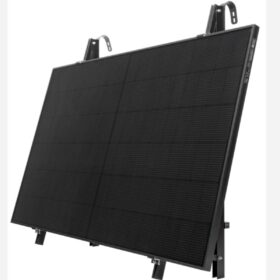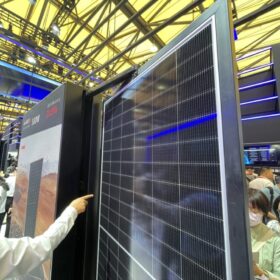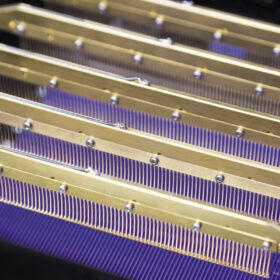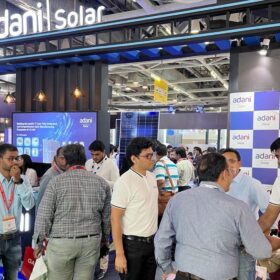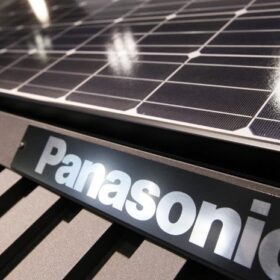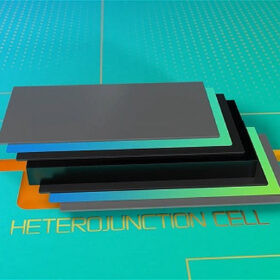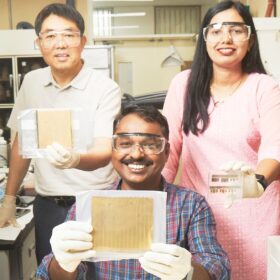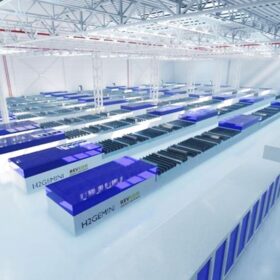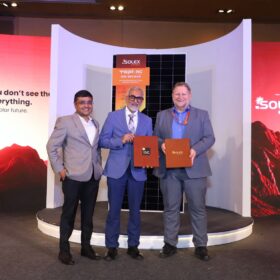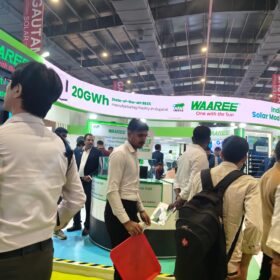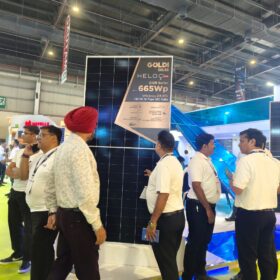Meyer Burger unveils black HJT solar panels for balcony applications
Switzerland-based manufacturer Meyer Burger has developed black heterojunction (HJT) solar modules for balconies, featuring 800 W microinverters, smart control units, and mounting systems.
Longi announces 27.09% efficiency for heterojunction back contact solar cell
Longi has announced the achievement of 27.09% efficiency for its heterojunction back contact (HBC) solar cell, a result that has been confirmed by Germany’s Institute for Solar Energy Research (ISFH).
Connecting HJT
The application of busbarless cell interconnection approaches could unlock the potential of heterojunction (HJT) technology, primarily by reducing the historically high silver usage of negatively-doped, “n-type” cell technology. As HJT manufacturing increases, a wave of applications may very well be on the horizon.
New US solar manufacturers likely to choose TOPCon
At the recent pv magazine RoundtablesUS 2023 event, four experts weighed in on PV module choices now and into the future, with TOPCon in the spotlight, but perovskite and tandem HJT on the not-too-distant horizon.
TOPCon dominates REI 2023 show
The Renewable Energy India (REI) Expo 2023 showcased TOPCon solar modules from almost all leading PV manufacturers in India, including Adani, Premier Energies, Waaree, and more.
Panasonic introduces half-cut HJT residential solar modules
Panasonic unveiled its new residential solar modules – including half-cut heterojunction (HJT) models, along with a home battery system and energy management device – at the recent RE+ trade show in Las Vegas.
REC launches 470 W heterojunction solar panel with 22.6% efficiency
REC has developed a new series of heterojunction solar panels with efficiencies up to 22.6% and an operating temperature coefficient of -0.24% per degree Celsius.
Scientists outline innovation pathways for PV technologies
Continued innovation in PV cell technology will have major impacts as PV is deployed at “multi-terawatt scale” over the next two decades, says a global team of scientists.
All-inorganic phase heterojunction perovskite solar cell with 21.59% efficiency
An international research team has developed high-efficiency solar cells with a 21.59% efficiency rating by using an all-inorganic phase heterojunction approach. The team used an anti-solvent-free DHA method to produce high-quality, inorganic perovskite thin films, resulting in better device performance under ambient conditions.
Revkor, H2 Gemini unveil plan to build 20 GW HJT perovskite cell, module factory in U.S.
The two companies are targeting to reach an annual production capacity of 20 GW by the end of 2025. Manufacturing activities are scheduled to begin in the second quarter of next year.
